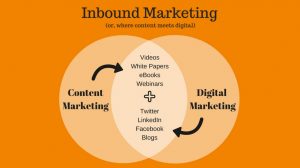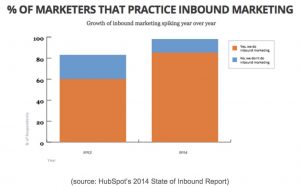Is Australia ready for inbound marketing?
Share
Businesses around the world are switching to inbound marketing to meet customer needs and stay competitive in the marketing landscape, writes Ryan Bonnici, so will Australian marketers do the same?
If you’re a business owner, or someone who works in the marketing industry, you know that digital marketing runs the spectrum of emotions: it’s colourful, it’s exciting, and even though it’s often challenging, it has its rewards as well. It’s ever-changing too. Over the last few years, the digital landscape has shed its skin many times. Compared to 10 years ago, digital marketing practices and strategies are unrecognisable, and a new strategy has emerged and taken the marketing world by storm: inbound marketing.
What does this mean for you? What do you need to do? How do you get started? No need to panic – for most businesses, inbound isn’t a change in what you do, it’s a change in how you do it. I’ll go over the basics for you in this article, but it’s up to Australian businesses to decide if they’re ready to join their customers in the 21st century.
Grab a carrot, drop the stick
What makes inbound different is that it’s not about selling to the customer, it’s about solving for the customer. It’s about providing value to your prospects and guiding them through the funnel, rather than forcing them. Think of inbound marketing as a carrot, and outbound marketing as a stick – when dealing with your customers, why would you ever use the stick anyway?
The best part about inbound? Customers love it. Look at a business like CFO On-Call, an Australian-based company comprised of skilled CFOs that offer insights to struggling businesses. Just six months after implementing inbound marketing, they saw nearly 10 times as many leads, a 200% increase in traffic, and 153% increase in sales-qualified leads.
Not so fast — what exactly is inbound marketing?
Maybe I got a little ahead of myself — let me clarify the basics of inbound marketing. It’s surprisingly simple, and yet it can have a huge impact on your bottom line.
Switching to inbound should by no means be a daunting task. For a long time, marketers have been blogging, emailing, Tweeting, Facebooking, creating remarkable content, building landing pages… the list goes on. Inbound marketing leverages all of these tools and creates value by using them in concert with each other.
To put it more simply, inbound is sort of like the convergence between content marketing and digital marketing. It utilises the most effective tools from each of these toolkits, and creates a way for your business to offer value to prospects without explicitly selling to them.
Click image to enlarge.
These tools may or may not already be part of your repertoire; either way, the beauty of inbound is that everything you need is easy enough to make, and it’s cheap. You’re not buying adverts, you’re not sending direct mail to people’s mailboxes – you’re just creating content, and then distributing it across the web using your social channels. People get a taste of what you have to offer, and are drawn into your website like a fly to honey.
Why use it?
This isn’t a crazy new idea; according to HubSpot’s State of Inbound 2014-2015 Report, 86% of marketers in North America and Europe said they run inbound marketing programs. Not only is inbound already widespread, but it is also growing rapidly: the number of marketers who stated they practiced inbound in 2014 was 25% higher than in 2013 (see graph below).
Click image to enlarge.
Nearly 40% of both B2B and B2C companies enjoyed an increase in ROI, and 74% reported a static or increased budget following the adoption of inbound marketing. Care to venture a guess on the price per lead of an inbound lead versus an outbound lead? 32%.
It should be noted that only 6% of the survey respondents were from Asia and the Pacific – the vast majority of successful inbound marketers are located in Europe and North America. If Australian marketers want to join the modern era of marketing, they will need to take a more active approach in adopting the inbound methodology.
Inbound marketers are serious about what they do. Most importantly, they’re serious about enjoying the lavish savings and benefits that inbound marketing affords their companies.
Is Australia ready to join the world with inbound?
When it comes to marketing, you don’t have to be a battler – there’s no need to subject yourself to needless suffering with outbound marketing. Inbound is a fantastic opportunity to do more with less, and to see real results.
In recent years, Australian marketers have lagged behind their peers with the adoption of digital. I want to take responsibility for bringing Australia to the forefront of marketing strategies.
Australia has a tremendous opportunity ahead, but in order to seize it, businesses need to be willing to adopt 21st century strategies – and that means beginning to use inbound marketing strategies to connect with prospects.
Ryan Bonnici is director of marketing in Asia Pacific and Japan for HubSpot.

















